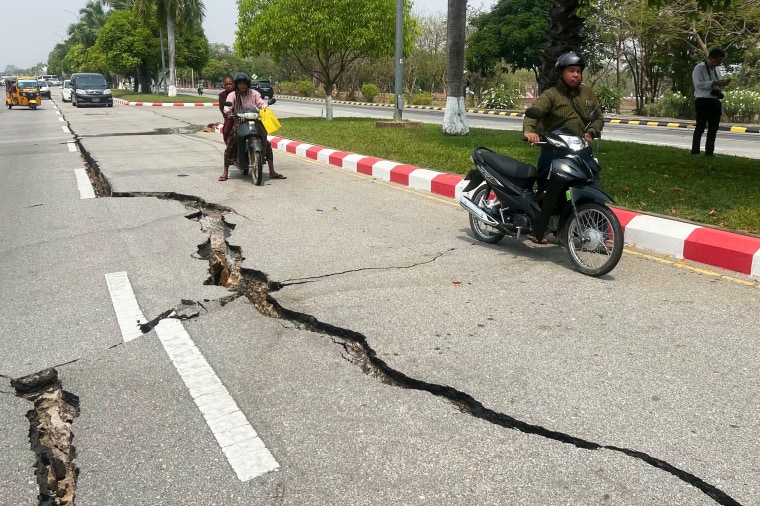On the evening of March 28, 2025, a powerful 7.7-magnitude earthquake struck near the border of Myanmar’s Sagaing and Mandalay regions, shaking the entire Southeast Asia and causing extensive casualties and destruction. The quake originated at a shallow depth of 10km, intensifying its impact, and was followed by a strong 6.4 aftershock minutes later.

Myanmar: Historic Bridge Collapses, Emergency Declared
Sagaing and Mandalay bore the brunt of the quake. In Mandalay, the iconic Ava Bridge collapsed, along with several historic temples and modern buildings.
The Myanmar military government declared a state of emergency in six regions including Naypyidaw and Mandalay. Hospitals are overwhelmed, and rescue efforts are hampered by ongoing civil conflict and damaged infrastructure.
Local aid workers report, “Access to the worst-hit areas is nearly impossible due to collapsed bridges and ongoing fighting.”

Bangkok, Thailand: High-Rise Collapse, Dozens Missing
The quake’s shockwaves reached Bangkok, where a 30-story under-construction tower collapsed, trapping dozens of workers. Two deaths have been confirmed, and 43 are still missing. Rescue operations are underway.
In downtown Bangkok, high-rise buildings swayed, rooftop pools overflowed, and subway service was halted. The Stock Exchange suspended trading temporarily.
“This is the strongest seismic shock Thailand has experienced since 1975,” said a Thai disaster agency official.

Regional Impact: Tremors Felt in China and Vietnam
Residents in China’s Yunnan Province and Vietnamese cities like Hanoi and Ho Chi Minh City felt strong tremors.
A Hanoi resident said, “Everyone ran out into the streets. I’ve never felt anything this intense before.”

While no casualties have been reported in China or Vietnam, public buildings suffered structural damage.
Global Aid and Response: Access to Myanmar Challenging
The UN and countries including Japan, Korea, and the US pledged humanitarian support. However, Myanmar’s political situation could delay international rescue efforts.

The International Red Cross emphasized, “Despite the complex political context, humanitarian assistance must proceed urgently.”
Expert Insight: Sagaing Fault, High Risk Zone

Seismologists confirmed the quake originated along the Sagaing Fault, where the Indian-Australian Plate collides with the Eurasian Plate.
“The shallow depth and fault line made it inevitable that this quake would affect the wider region,” explained Dr. Suriya Chanya of the Southeast Asia Geoscience Institute.
Outlook: Aftershock Risk and Rebuilding Ahead
Experts warn of significant aftershocks in the coming weeks. Damage assessments and safety inspections of vulnerable buildings are now urgent priorities.
A report by the Southeast Asia Disaster Research Institute stated, “This quake shows the need for stronger cross-border disaster response mechanisms, better construction regulations, and early warning systems.”
Myanmar and Thailand are setting up temporary shelters and urging citizens to stay alert for aftershocks.
Conclusion: A Wake-Up Call for Southeast Asia
This earthquake starkly highlighted Southeast Asia’s vulnerability to seismic disasters. The collapsed landmarks, overwhelmed hospitals, and communities awaiting rescue underscore the region’s urgent need for disaster readiness and global solidarity.